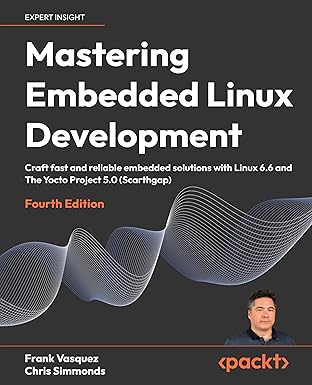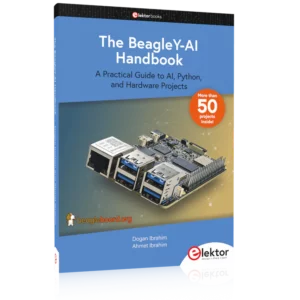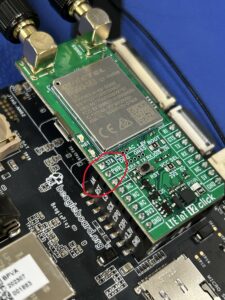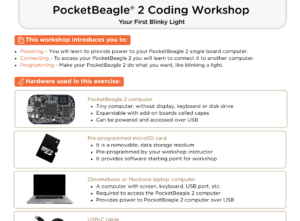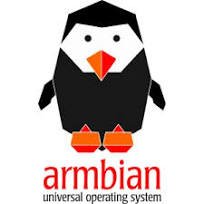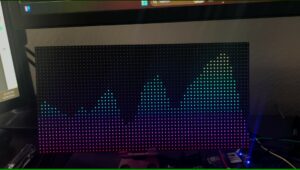The BeagleBoard.org Foundation is a Michigan, USA-based 501(c)(3) non-profit corporation existing to provide education in and collaboration around the design and use of open-source software and hardware in embedded computing. BeagleBoard.org provides a forum for the owners and developers of open-source software and hardware to exchange ideas, knowledge and experience. The BeagleBoard.org community collaborates on the development of open source physical computing solutions including robotics, personal manufacturing tools like 3D printers and laser cutters, and other types of industrial and machine controls.
Our Story
BeagleBoard.org is the result of an effort by a collection of passionate individuals interested in creating powerful, open, and embedded devices. We invite you to participate and become part of BeagleBoard.org, defining its direction.
Support for BeagleBoard.org boards comes from the very active development community through this website, the forum, the documentation site, our OpenBeagle GitLab instance, IRC and Discord. Original production funding was provided by Digi-Key, a major international distributor, but distribution has now been opened up to dozens of distributors across the world. On-going funding for board prototypes has been provided by manufacturing partners. Jason Kridner, our community manager and software cat herder, left Texas Instruments after almost 30 years to focus on providing support and development of the BeagleBoard.org project. Manufacturing partners pay volume prices for the TI (and all other) components. BeagleBoard.org licenses the use of BeagleBoard.org logos for use as part of the Manufacturer, Compliant and Compatible logo programs. BeagleBoard.org also participates as a mentoring organization for Google Summer of Code which pays a small fee for mentoring students. The first five BeagleBoard.org designs (BeagleBoard, BeagleBoard-xM, BeagleBone, BeagleBone Black and BeagleBoard-X15) were all executed by BeagleBoard.org co-founder Gerald Coley, now of Austin Circuit Design.
All the designs are fully open source and components are available for anyone to manufacture compatible hardware. We do request contact and permission before considering the use of the BeagleBoard.org name on any products.
How is Beagle funded?
While all of the material produced is open source, the BeagleBoard.org Foundation does retain copyright and trademark rights on various assets, including the BeagleBoard.org brand (learn more about brand use). Manufacturers provide a royalty payment for use of the brand and it funds your support as a community member, so purchasing BeagleBoard.org branded versions of the boards goes a long way to support the community. We are also supported by generous donations from those who believe in our mission.
Contribution
Interested in helping further our mission? Consider making a financial contribution, every dollar counts!
Where did the BeagleBoard idea come from?
My [Jason’s] personal interest with computers and electronics began around age 8 with “Getting Started with TRS-80 Basic” and “Getting Started with Electronics”. My mom let me do anything I wanted with the computer, because all of her important files were on floppy disks far away from where I was playing—except open it up and mess with the electronics. Once the bug bit me, I spent all my spare change buying random components from Radio Shack and building simple 555 circuits. It took a long time to eventually getting hold of Z80 processors and begin programming them in assembly to write to things like voice synthesizers. I’ve always wanted to see those same freedoms to learn about computers and electronics imparted on the next generation—as well as short-circuiting the connection between computers and electronics.
Gerald Coley, at the time a hardware guy in TI strategic marketing supporting OMAP customers, asked me, and others, what could we do with a board based on the highest performance ARM-based system-on-chip available today, if it was small and powered via USB. The answer was to create the most amazing open source development and education project yet seen in the embedded world.
The first thing I did was ask Gerald about things we could add to the board. What about an LCD? What about on-board WiFi and Ethernet? He said, sure, no problem $10 here, $30 there. When I finally woke up and realized that with all the things we wanted to do with this board, the best thing to do was to enable them all by simply getting out of the way.
Doing more with less
By eliminating all of the on-board peripherals not already among the numerous ones on the digital and analog system-on-chip pair themselves, and by providing standard expansion buses, like high-speed USB 2.0, SDIO, and DVI-D, developers are able to bring-their-own peripherals and do exactly what they want. What we created was a low-cost, fan-less computer, with all the expandability of today’s desktop machines, but without the bulk, expense, or noise. It is the kind of platform you can use to develop computer science solutions that could be put anywhere.
Instead of using a fixed, embedded LCD, Gerald used the digital and analog LCD ports to add monitor/TV connections, so that any DVI-D enabled monitor or S-Video enabled TV could be used. The USB port (eventually, ports) can be used to add a high-speed hub for adding a keyboard, mouse, and WiFi connection and the MMC/SD connector can be used to add multiple gigabytes of storage, but building a computer out of a BeagleBoard is just the beginning.
Collaborating on Beagle
With the simple theme of supporting standard interfaces and getting out of the way, those who would like to collaborate on extending Beagle are encouraged to do it in any way they’d like. Instead of trying to take control of the community by pushing a single collaboration portal, BeagleBoard.org developers are encouraged to take their contributions directly to the communities already supporting the project they desire to port to Beagles, or to create their own community collaboration tools using existing offerings at github.com, our own git.beagleboard.org, and others.
It is certainly true that by encouraging BeagleBoard.org collaboration to spread to the corners of the Internet that there will be fragmentation in the community. Developers are therefore encouraged to:
- Get involved with documentation on docs.beagleboard.org,
- Register projects (hardware, software, books, tutorials) at BeagleBoard.org/projects, and
- Inform people about their activities on forum.beagleboard.org.
Today, the open web and distributed syndication has been crushed by social media outlets and RSS/Atom feeds cannot be as freely aggregated, but we aren’t giving up. Get involved with the beagleplay.io project and help take the Internet back.
Learn more at BeagleBoard.org/collaborate.
What can Beagle do?
I’m still trying to find applications where a Beagle can’t play a role. The general-purpose processor performance of Beagle exceeds that of other low-cost computing platforms on the market today, such as the OLPC XO-1. Additionally, most Beagles have 2D and 3D graphics acceleration capabilities as well as either DSPs optimized for multimedia processing or PRUs optimized for ultra-low latency. A typical configuration of a Beagle system would draw power off of a USB port on standard laptop or desktop PC used for developing and downloading the low-level software, but additional peripherals would allow Beagles to operate as a multimedia computer on their own.
Possible applications
- Low-cost Linux PC
- Network-connected digital signage
- 3D user interface development (Clutter, etc.)
- Game console
- LCD-to-picture-frame conversion kit
- Adobe Flash client “alarm clock” (like the Chumby)
- Kitchen computer
- Web services development
- Google Talk video phone
- Notebook TV-out via USB
- Projector media reader and presenter
- Gaming platform emulator
- Thin client terminal
- Web browser for the TV
- Multimedia codec and framework development
- Home networked media (DLNA/XMPP) server/client
- Security camera analyzer, streamer, recorder, and monitor
- USB traffic monitor (looks like a HUB)
- USB class conversion (add software support where drivers aren’t available on the PC)
- Network sniffer
- Set-top box
- Vehicle telematics and automation
- Software defined radio
- Mobile digital television
- Robotics
- Home automation
- and many more that community members can imagine…
How do I get a Beagle of my own?
A purchase link for a Beagle will always be available on BeagleBoard.org and we’ve set it up for each of the boards to be available for purchase for 10+ years.
If you are more adventurous, then you are invited to utilize all of the Beagle design materials. This includes electronic copies of the schematic, layout, and assembly designs. All of the Texas Instruments components utilized on the board will be made available for public purchase. If there is a component that is difficult for you to purchase, please contact me for additional information. Building boards isn’t easy and you are encouraged to purchase the boards through the website, but links to manufacturers who can handle making these boards will be provided to those looking to extend the design.
For whom are Beagles intended? / Using Beagle for fun, education, and profit
Makers, educators, explorers, professional engineers and corporations seeking to build upon a rich ecosystem are all encouraged to participate in BeagleBoard.org. With so much openness and thousands upon thousands of examples of people doing fun, interesting and profitable things with Beagles, you’re missing out if you don’t count yourself in for whom Beagle is intended.
Contact Us
Christine Long
BeagleBoard.org CEO
Jason Kridner
BeagleBoard.org board president and co-founder
Meetings: Create a meeting


